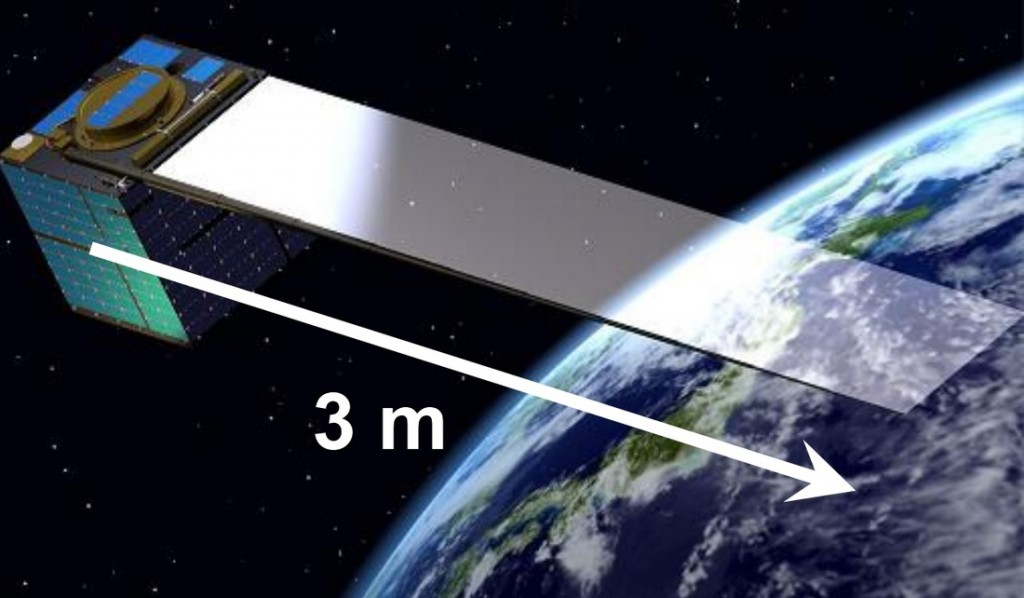QSat-EOS
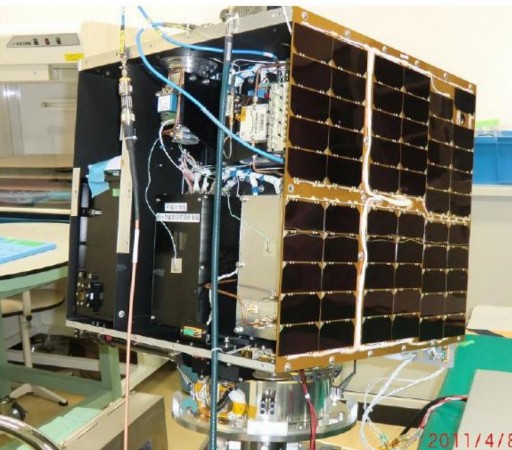
QSat-EOS, the Kyushu Satellite for Earth Observation System Demonstration, is a microsatellite developed at Kyushu University in a project initiated in 2005 to demonstrate a small scientific payload for the observation of Earth, the study of Earth’s magnetic field, an assessment of micro debris in orbit and water vapor observation in the upper atmosphere. Another task that the satellite will fulfill is the demonstration of a de-orbit sail for space debris mitigation.
The microsatellite is nearly cubical in shape, 49.2 by 50.3 by 50.2 centimeters in size with a total mass of under 50 Kilograms. The satellite consists of aluminum alloy panels that offer internal and external mounting structures for the various satellite systems.
QSat is equipped with a total of 200 body-mounted gallium-arsenide solar cells that deliver an average power of 74 Watts to a Power Unit that distributes power to all satellite subsystems and controls the battery unit which itself consists of 18 Nickel-Metal Hydride AAA batteries six of which are connected in series creating three parallel strings for a total capacity of 10.5Ah. The satellite uses a 7.2-Volt power bus. The Power Unit is also in charge of satellite activation when sensing the activation of the separation switch inside the payload adapter.

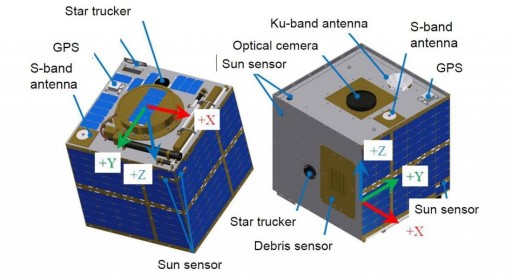
A Central Onboard Computer based on an H8/2638 microprocessor is used to control all the satellite’s functions, connected to all systems through a CAN bus that interfaces with the various subsystem controllers which themselves are equipped with their own CPU, SRAM memory and EEPROM memory. The OBC supports two CAN channels and two serial connections with a built-in memory of 1MB of SRAM and 2MB of EEPROM containing the boot code.
Attitude determination is accomplished by two star trackers, two sun sensors, a three-axis magnetometer and Fiber-Optic Gyros. Actuation is provided by a Reaction Wheel Assembly and Magnetic Torque Rods. QSat requires a pointing accuracy of better than 5°. A dual GPS antenna is used for orbit determination.
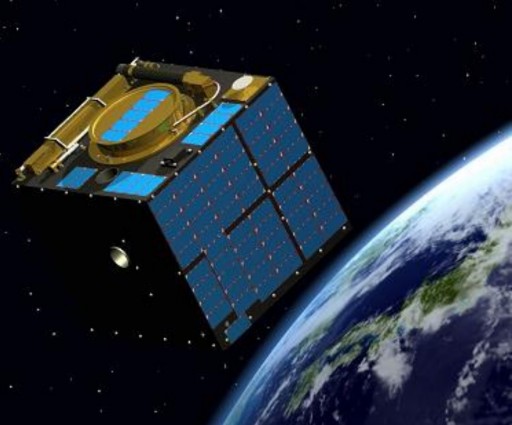
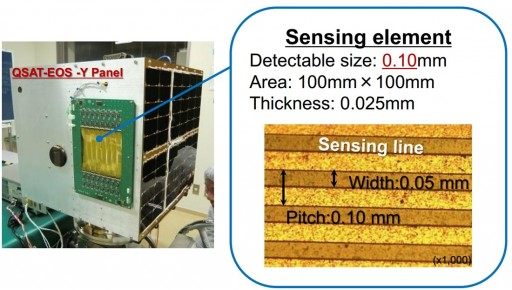
QSat is outfitted with two S-Band patch antennas and a Ku-Band horn antenna for communications. The Ku-Band system consists of separate receiver and transmitter electronics connected to the antenna via a duplexer to support an experimental uplink capability at a data rate of 10Mbit/s and an operational science data downlink at 30Mbit/s. The Ku-Band transmitter is connected directly to the imaging payload via a USB 2.0 connection to enable a direct downlink of high-volume data.
Also using separate transmit and receive systems, the S-Band communications terminal can achieve data rates of 1kbit/s for command uplink and 100kbit/s for housekeeping data downlink.
QSat-EOS carries three instruments: a Two-Band VNIR Imager, a Magnetometer and a Debris Sensor.
The primary objective of the mission is Earth observation for environmental monitoring, resource studies for agriculture and forestry as well as disaster monitoring. The VNIR payload is a staring imager that has an aperture diameter of 10 centimeters and a focal length of 40 centimeters, covering two spectral bands – 525-605nm in the visible range and 774-900nm entering the near-infrared spectral range. The payload has a field of view of 9 by 9 degrees and uses a CMOS camera with a 2000 by 2000-pixel detector to create imagery with a ground resolution better than 5 meters.
The Magnetometer payload is a fluxgate magnetometer for the study of magnetic field variations caused by Field-Aligned Currents in the polar and equatorial regions which are known to cause charging on orbiting spacecraft. The instrument is a commercial magnetometer produced by Honeywell (HMC2003T). The fluxgate sensor uses the nonlinearity of magnetization properties for the high permeability of easily saturated ferromagnetic alloys to serve as an indicator for the local field strength.
Data from the magnetometer will be used for an assessment of Field-Aligned Currents in the polar region and poorly understood FACs in the equatorial region – delivering data that can be compared to measurements made by ground-based Magnetic Data Acquisition Systems.
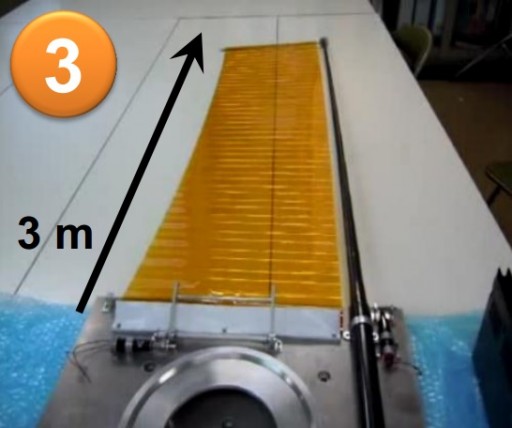
The Debris Sensor has been design to study micro debris in orbit using an in-situ detector that is capable of measuring debris from a size of 100 microns to several centimeters in order to provide data on the distribution and flux of such debris with focus on size range which can not be determined by ground based assets.
The detector is installed on the -Y Panel of the satellite with a sensing element 10 by 10 centimeters in size. It consists of 0.05-millimeter wide copper wires that are installed on a polyamide film spaced 0.1 millimeters. The current through each line is monitored to detect changes which can point to the occurrence of debris events and the number of affected wires can be used to determine the debris size.
At the end of its mission QSat will deploy a de-orbit sail to demonstrate an accelerated orbital decay for debris mitigation. The sail consists of a deployable boom that has a three-meter long and 35-centimeter wide Kapton film attached for a significant increase in orbital drag.
